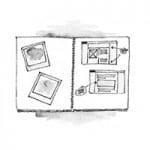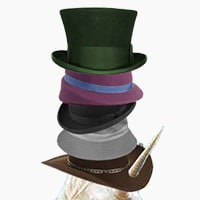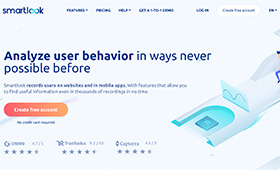Getting Your First UX Design Job: Step-by-step Guide
Are you looking to get your first UX Design job? Chances are that most of the job postings you’ve come across so far had parts that read like this: “5+ years of proven experience as a UX designer, front-end development…”. Does that sound familiar?
Yeah, requirements like these are certainly demotivating, especially for a beginner UX designer who has just completed a training so has little or no experience working on complex projects.
Well, don’t feel disheartened when you read job postings like this. UX design industry is a rapidly developing field that is still being formalized, so there are lots of opportunities for people who are new to the industry.
But how to take advantage of these opportunities and begin building your experience? To help you with this, I’ve compiled this step-by-step guide. It’ll show you the steps that you need to take in order to maximize your chances of getting your first UX design job without years of working with well-known companies.
Sounds good? Let’s begin.
Step 1: Prepare Your Portfolio
“Wait, but I don’t have any experience, that’s why I’m reading this article,” you can say. Well, do you REALLY have no experience? I mean didn’t you work on any projects while you were learning the job? All UX courses have you completing some teaching projects, why not include them into your portfolio?
Of course, they might not be the kind that experienced designers include in their resumes, but they’ll have to do. Hiring managers want to see at least something, and listing your skills and qualifications won’t help them to make a decision.
So, feel free to include the following projects in your portfolio:
- Projects you completed while you were studying
- Self-initiated projects you did to improve your skills
- Projects you have participated in (describe clearly what you did).
Make sure that every portfolio piece you include communicates:
- Your role in that particular project
- The problems solved by your solution
- Timeframes in which you completed your part
- Skills and technologies you used to complete that project
- The outcome of that project.
Pro Tip: highlight the times you’ve collaborated with other developers/designers. Chances are high that your first UX Design job will be collaborative, so emphasizing your teamwork skills is something you have to do.
Step 2. Become a Proficient User of at Least One UX Prototyping Tools
Many employers ask UX designers what prototyping tool they work with, so you have to have a good answer. Prototyping tools such as Sketch, Mockplus, Invision Studio, MockFLow, and Balsamiq are often used by UX designers to translate their ideas into visual and interactive prototypes, so mastering at least one of them is a must.
For example, many UX customers today are looking for interactive prototypes because they provide them with an overview of the future design, ideas, and interactions. A designer without an ability to work effectively in at least one prototyping tool won’t be an interesting candidate to perform their project.
So, make it clear which tool you use in your resume to let your potential employers and customers know that you can share your ideas with them easily.
Step 3. Connect with People in the Industry
Networking is an essential part of the modern business because knowing people can get you’re a lot of business. A good way for you to start networking and connect with some companies, hiring managers, and fellow UX professionals is to create a LinkedIn profile and build your network there.
There are a number of advantages of having a complete profile there. Not only a LinkedIn profile will be another online resume that increases your online presence, but being active on LinkedIn can get you connections you need to get an interview. There are thousands of recruiters and companies looking for entry-level professionals like you there, so you can check what’s available and who’s currently looking.
Moreover, social professional networks such as LinkedIn are the number one source of quality hires, followed by online job boards and employee referrals, according to LinkedIn Business report (PDF). Don’t forget that LinkedIn also has Insights about User Experience Designer Members page where you can get some interesting information such as average salary, available jobs, profiles of experienced veterans, and more.
Another advantage of being on LinkedIn is having access to fresh job postings. A quick search for “User Experience Designer” job there will generate hundreds of jobs from around the world, so checking what’s available every day may be beneficial for your job search.
Step 4. Don’t Hesitate to Apply for a UX Design Job
One unnecessary barrier that many beginner UX professionals face is the fear of applying to jobs. The main reason for having such fear, of course, is the lack of experience; others are also dreading being rejected and losing motivation to supply.
You need to overcome this fear because it can unnecessarily postpone your job hunt and delay the start of your career. If you have your resume and portfolio ready, apply to UX Design jobs, period (this also applies to LinkedIn jobs for which you have to have a complete profile). Even if a company doesn’t hire you, you’ll have an excellent opportunity to practice your UX interview skills. That’s also important!
Step 5. Never Stop Learning
The more knowledge you have, the faster your career will start. To get a good entry-level UX Design job, you have to be involved in the online UX community, learn new things, and update your skills. Here are some things to consider:
- Learn new skills. There are tons of UX tools you can learn, so expand your skills using online courses and include them in your resume.
- Network with other people in the UX industry. Join online UX professional groups on LinkedIn, talk to others at forums and discussion boards, and connect with recruiters and UX experts on social media.
- Read UX industry news and trends. Being aware of them is an advantage that shows your commitment to the industry and profession.
Tools for Job Search
Now that you know what you have to do to get your first UX design job, take a look at these tools that can help you increase the effectiveness of your job hunt.
- UX Jobs Board. As the name suggests, this site helps you to connect to UX employers from around the world. In addition to that, it offers quite useful UX resources and tips for job search.
- Assignmenthelper. The importance of having an error-free resume cannot be overstated, so check out this proofreading tool to ensure that you won’t be excluded as a potential candidate because of a silly spelling or grammar mistake.
- Muzli. This Chrome extension aggregates design and UX news and inspiration links for you to keep you updated about the latest developments in the industry.
- A-Writer. Effective persuasive writing is crucial to connect with influential UX designers and potential employers, and this tool can help you with mastering that.
- UX Companion. A useful glossary of UX design theories created for both beginner and experienced UX designers.
Over to You
Without a doubt, salary is important, but don’t try to chase it at this point. What you should be chasing as a beginner UX designer is personal growth. Any experienced and successful UX designer will tell you that their success came thanks to challenging projects they loved doing.
In other words, be committed to the success of your customers and to your personal growth, and the money will follow.







Great Information for landing your first UX Design job. It’s very practical and helpful for freshers. Thanks for sharing such a piece of wonderful information.